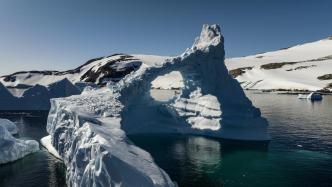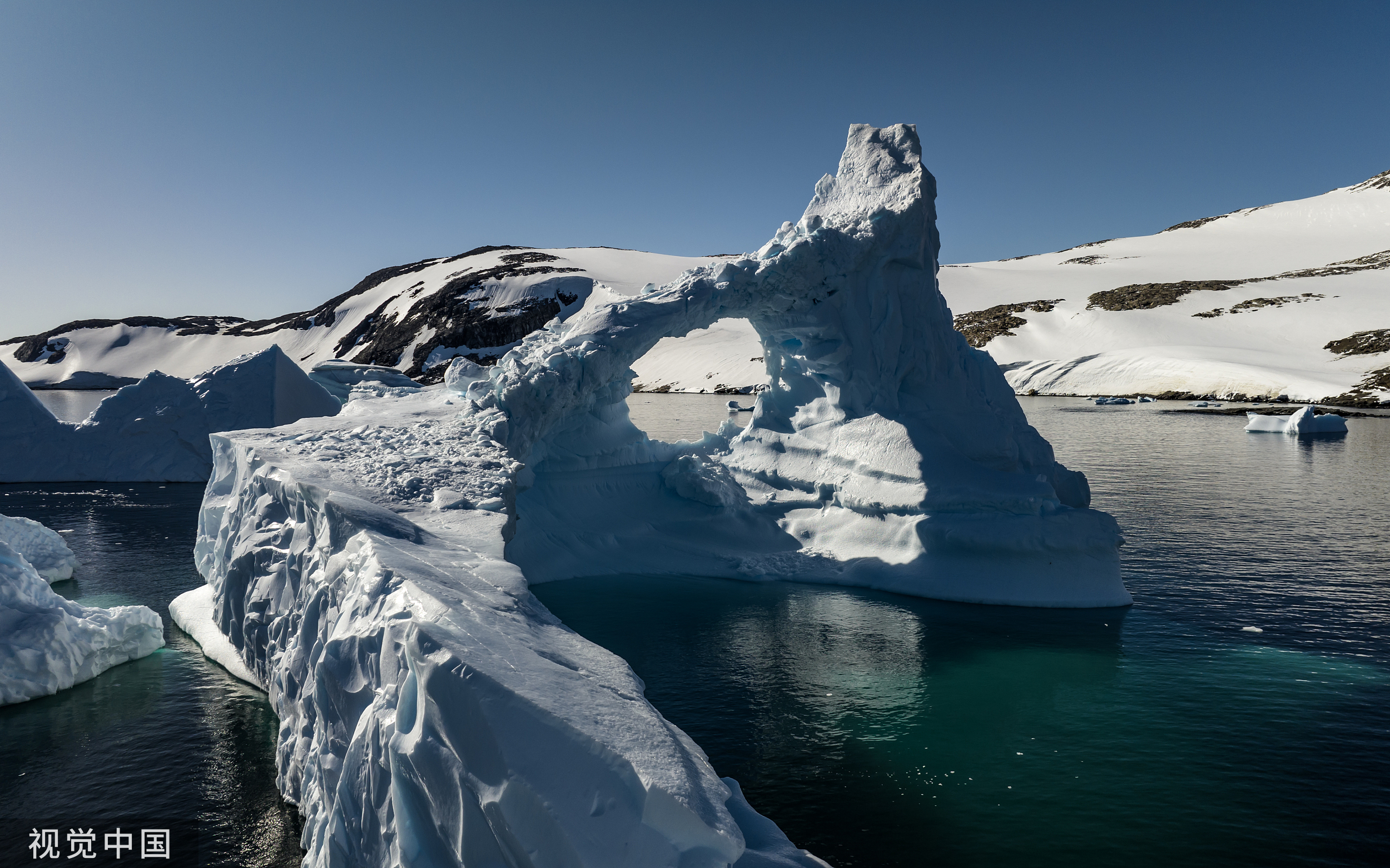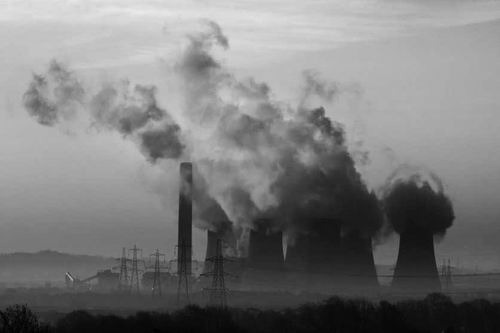

On February 24, 2023 local time, icebergs around Horseshoe Island, Antarctica.
In mid-July, the Antarctic sea ice extent was the lowest in winter in 45 years, which was 2.6 million square kilometers lower than the climate average from 1981 to 2010. This is the latest record that the extent of Antarctic sea ice has continued to decline and bottom out for seven consecutive years since 2016.
Since satellite observations in 1979, the extent of Antarctic sea ice has not changed significantly, and even has a slight upward trend, and has a large interannual variability. The first working group report of the United Nations Intergovernmental Panel on Climate Change (IPCC) released in 2021 assessed changes in Antarctic sea ice extent: According to the historical trend of decadal decline, we cautiously believe that this wave of low values is still natural. Within the range of variability, it may also belong to the interdecadal oscillation.
It has been several years since the release of the IPCC report, and the extent of Antarctic sea ice has continued to decline and the extent has been so large. Against the background of global warming, it has attracted more attention.
Compared with the "locked" around the Arctic Ocean by the continent, the northern boundary of sea ice in the southern hemisphere is an open system, which determines that the change of Antarctic sea ice extent is affected by complex processes. However, the current numerical model does not perform well in Antarctica, and it is difficult to reproduce the observed facts.
In addition, the future trend of Antarctic sea ice extent has always been a matter of concern to everyone. The IPCC predicts that under the medium-to-high emission scenario, the extent of Antarctic sea ice will decrease significantly in the middle and late 21st century, but abnormalities have occurred in the past seven years, which is really unexpected. Does this mean continued decline in Antarctic sea ice extent has entered the new normal, and that human activity is to blame?
For this question, it is still difficult to give a clear answer, because there is not enough evidence to show that the greenhouse effect, a single factor, dominates the change of Antarctic sea ice extent. The difficulty of attribution lies in the complex atmosphere-ocean-sea ice positive and negative feedback mechanism in Antarctica. On the one hand, the Southern Ocean is a significant area for absorbing atmospheric heat, which carries heat to the depths of the ocean through overturning currents, delaying the response of the sea surface to global warming; on the other hand, various feedback mechanisms such as cloud feedback, diminishing rate feedback, changes in the eddy at the northern edge of the sea ice belt, and the extremely dry atmosphere caused the loss of the greenhouse effect of water vapor, and stratospheric ozone also affected the temperature and wind force in the troposphere.
It is worth noting that the decrease in Antarctic sea ice extent in the past seven years has not been a uniform decrease around Antarctica, and the Bellingshausen Sea outside West Antarctica has the most significant change. As for the reasons for the decline of Antarctic sea ice extent, from the perspective of regional atmospheric circulation and atmospheric teleconnection, there are four factors: the continuous positive phase of the Southern Hemisphere Annular Mode/Antarctic Oscillation; the occurrence of La Niña events for three consecutive years from 2020 to 2022; The Inter-Pacific Oscillation is in negative phase; the Atlantic Multidecadal Oscillation is in positive phase. These factors led to the anomalous strengthening of the Amundsen depression and its southward movement, resulting in a significant reduction in sea ice in the Bellingshausen Sea and the east side of the Antarctic Peninsula due to the thermal advection to the shore.
From the analysis of oceanic factors, the sea surface temperature in the Southern Ocean has increased abnormally. Under the joint influence of the strengthening of the westerly belt and the southward movement, the Ekman upwelling has strengthened, which promotes the upward transport of subsurface warm water, which in turn leads to the melting of sea ice.
In addition is the snow and ice albedo effect. The continued lack of sea ice in spring and summer increases the absorption of short-wave solar radiation by the Southern Ocean, which further hinders the formation of sea ice in autumn. The warming of the Southern Ocean plays an increasingly important role in hindering the growth of sea ice in winter.
There are also studies that believe that atmospheric rivers can cause a significant reduction in sea ice in the marginal sea ice area through thermodynamic processes. The intrusion of atmospheric rivers brings warm, humid, and cloudy weather, which can promote the melting of sea ice in cold seasons, but the impact is limited in summer .
There is no doubt that reduced sea ice will have a range of effects. Changes in sea-ice-air interactions will have significant regional and large-scale effects by altering the energy and matter in the atmosphere and oceans. The Southern Ocean is an important carbon sink for absorbing atmospheric carbon dioxide. After the sea ice retreats, the surface of the Southern Ocean will be directly exposed to the atmosphere. This will cause ocean acidification, which will affect marine plankton and even the food chain. In the long run, it will cause marine ecological crisis. In addition, cold-loving ice animals will suffer from rising temperatures and loss of sea ice.
There are several important reasons why current research on Antarctic sea ice has yet to achieve substantial breakthroughs. First, there is a lack of sufficient observational data, which makes it difficult to support the understanding of complex processes and mechanisms; second, the performance of numerical models is poor, and the simulation results of various models in Antarctica have large dispersion; third, it is still difficult to study the attribution of changes. It is difficult to separate natural and human activity factors, and human activity signals have not yet appeared.
The author believes that although it is difficult to directly detect the impact of greenhouse gas radiative forcing on Antarctic sea ice, the changes in Antarctic sea ice extent are clearly driven by atmospheric circulation anomalies and ocean anomalies, and these anomalous changes may imply human activities factor. If these "bridging" factors such as low pressure in the Amundsen Sea, southward movement of the westerly belt, atmospheric teleconnection, and rising sea temperature can prove that Antarctic climate change is intrinsically related to human activities, it means that scientists should not only pay attention to temperature itself, but also to Tight circulation adjustment.
If Antarctica, especially the West Antarctic and the Antarctic Peninsula, continues to warm, it will become a dangerous member of the critical member of the Earth system. Not only is the extent of sea ice changing, but the instability of the West Antarctic ice sheet partially soaked in seawater will also increase. In the future, it is not ruled out that there will be "black swan" events that will lead to a sharp rise in sea level, and we must be alert to the profound negative impact of these events on human society.
(Xiao Cunde is a professor at the State Key Laboratory of Earth Surface Processes and Resource Ecology, Beijing Normal University; Yang Jiao is an associate researcher at the State Key Laboratory of Cryospheric Science, Chinese Academy of Sciences)
(Originally titled "Antarctic sea ice extent continues to decline: Is it entering a new normal?")


